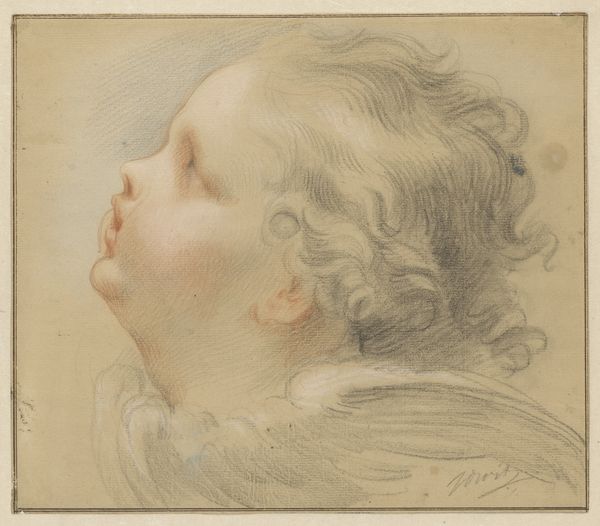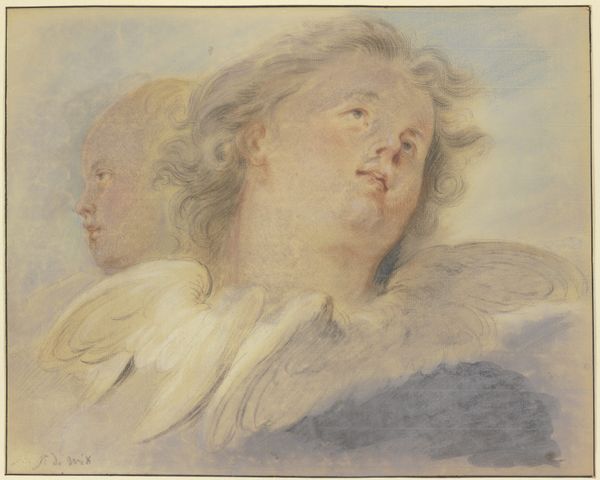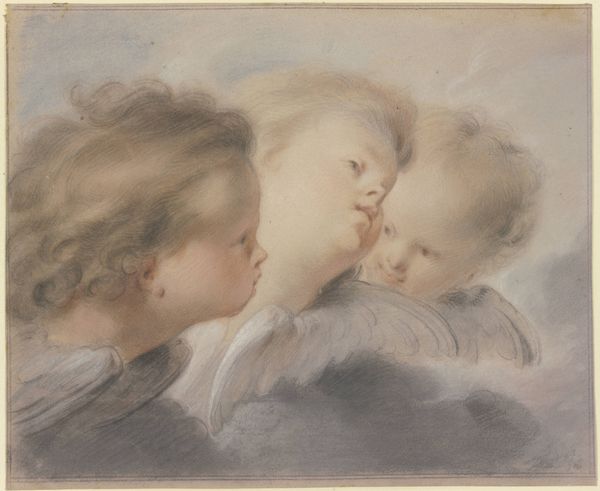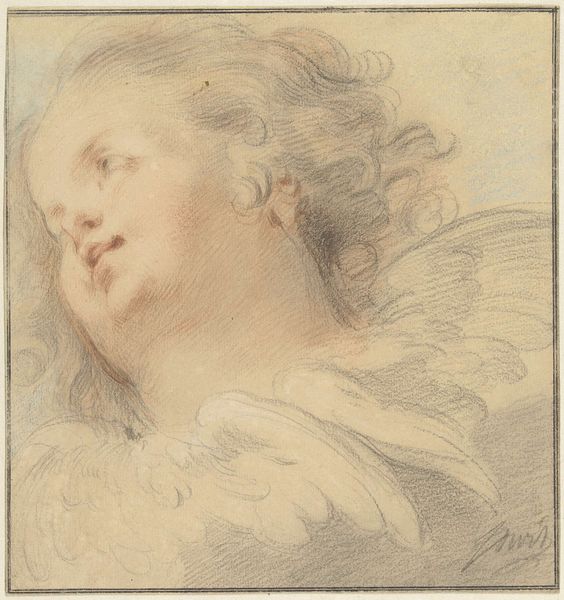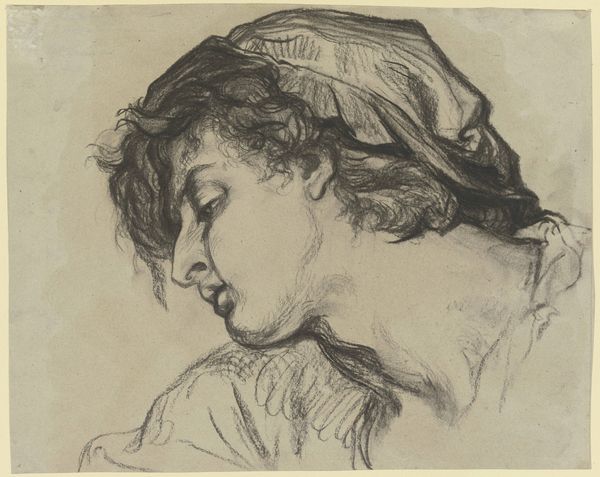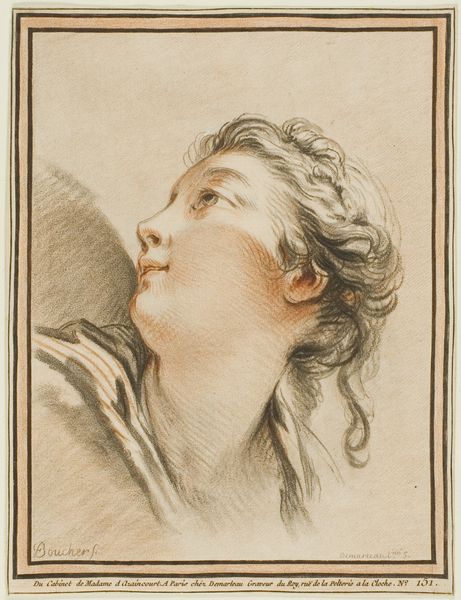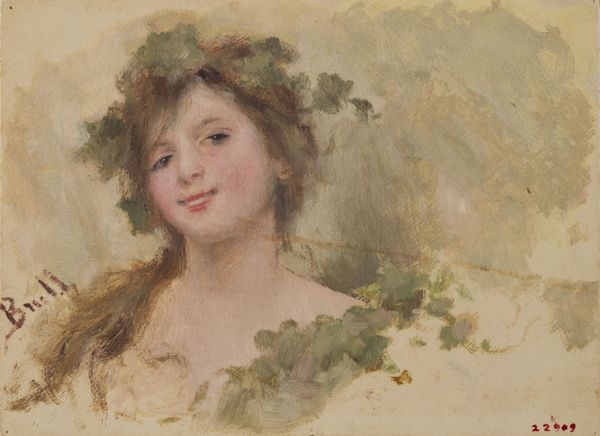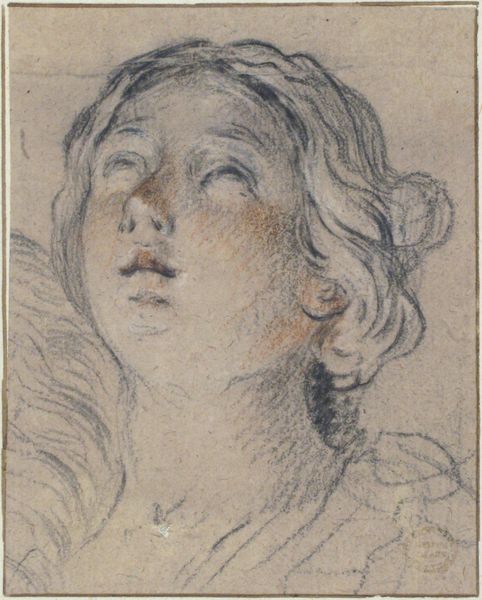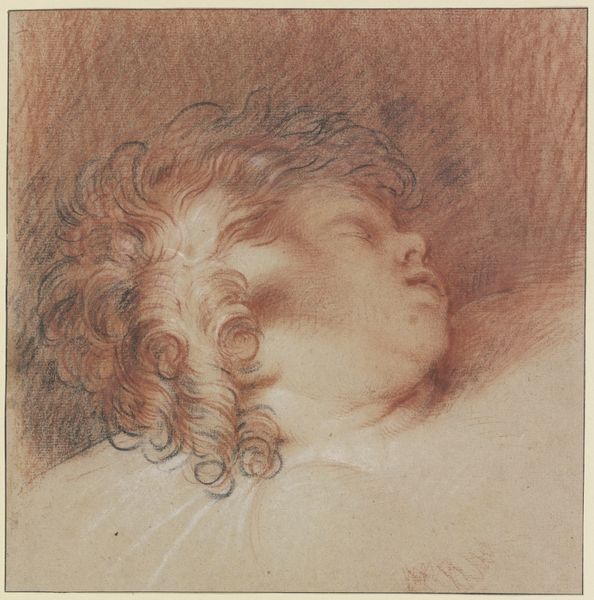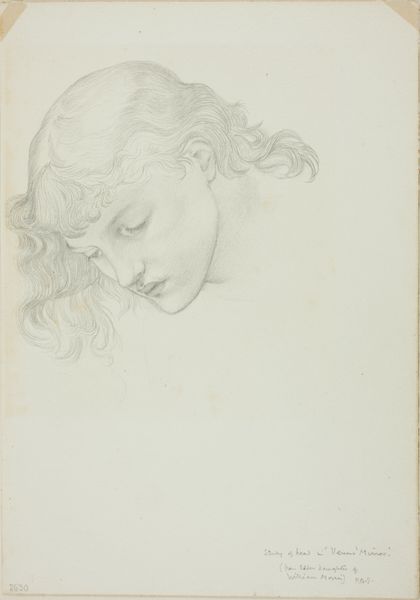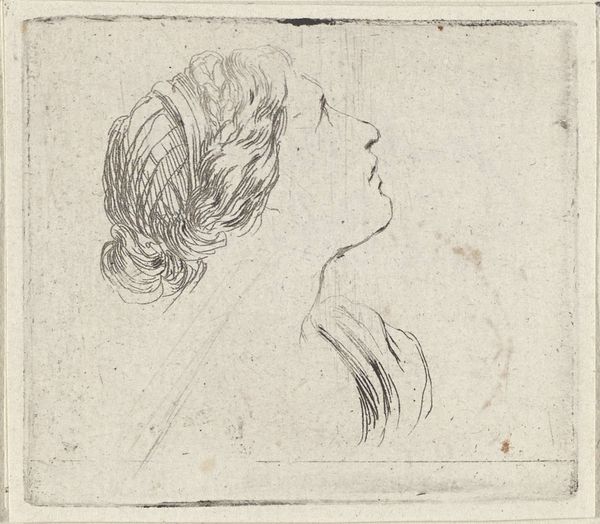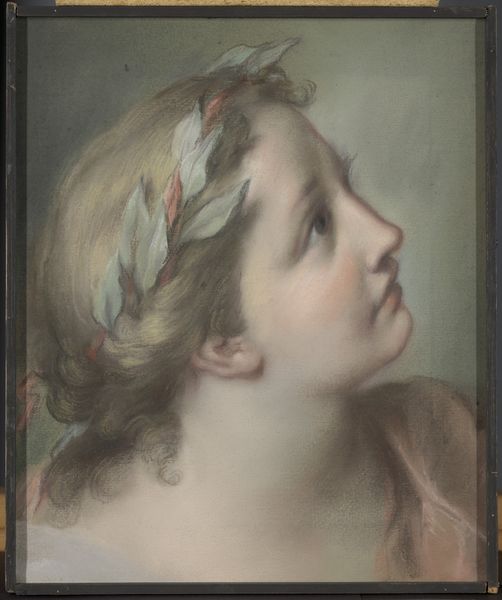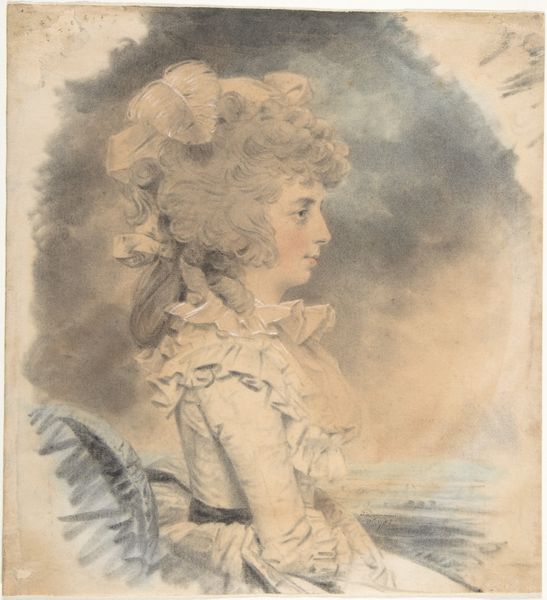
drawing, ink, chalk, graphite, pastel
#
portrait
#
drawing
#
baroque
#
ink
#
romanticism
#
chalk
#
graphite
#
portrait drawing
#
pastel
#
history-painting
#
watercolor
Copyright: Public Domain
Curator: This is "Angel head ot the left," a drawing attributed to Jacob de Wit, held here at the Städel Museum. Editor: It's arresting, isn't it? The softness of the lines, the almost palpable cherubic innocence. There's a yearning upwards, a searching gaze… What materials did de Wit use to create this? Curator: It’s executed using a combination of ink, chalk, graphite, and perhaps even a touch of pastel. Editor: A fascinating blend. Thinking about this combination of materials brings to mind questions of artistic labor and process in 18th-century workshops. How was such delicate work taught and practiced? What kind of specialized knowledge was required to layer these different mediums? Curator: It certainly speaks to a mastery of draughtsmanship. Notice the subtle rendering of the light across the angel’s cheek, achieved with delicate blending. The loose, sketch-like quality hints at the immediacy of the artist's hand. Editor: Yes, but it also makes me think about the religious and social implications of angelic imagery during this era. Was this artwork meant for private devotion, or public display? How did representations of angels influence societal perceptions of childhood, innocence, and spirituality, especially for women and marginalized genders? Curator: Those are complex, important points. And looking at this from the perspective of its construction, the blending and layering of drawing materials was often taught via apprenticeship in artists’ workshops; there was a sophisticated division of labor where students often helped grind pigments or prepare surfaces before assisting the master artist with larger projects. Editor: A reminder that even heavenly depictions have earthly origins and are born of tangible production practices. The ethereal quality doesn't negate the physical labor involved. Curator: Exactly. Examining it with this mindset highlights the intersection of skill, materials, and the historical context. It adds a depth to our understanding of its creation. Editor: Absolutely. These subtle details allow us to consider this drawing within broader historical conversations about identity, religion, and the very concept of “art.” Curator: Indeed. It's a beautiful example of how different perspectives enrich our experience. Editor: Yes, I leave with so much more to ponder thanks to you and de Wit’s hand.
Comments
No comments
Be the first to comment and join the conversation on the ultimate creative platform.
